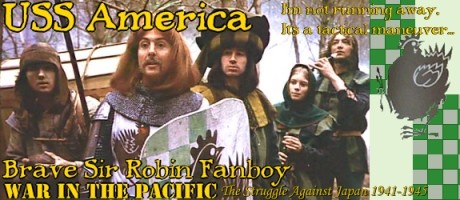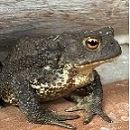mdiehl
Posts: 5998
Joined: 10/21/2000
Status: offline

|
quote:
You claim the Red Tails trained for three years - please provide proof.
Because as far as I am aware, the 99th Flying Pursuit Squadron was activated in March 1941. The Tuskegee Flight School was only established in June 1941 and Pre-Flight stage training (mechanics, physics of flights, aeronautics, deflection shooting, thinking in 3D) only commenced in July 1941.
Primary Pilot Training started in September 41, while Basic Pilot Training started in November 1941, with Advanced Pilot Training starting in January 1942. The first class graduated on 6 March 1942 - after being in training for 9 months (the standard USAAF training period, with each stage - Pre Flight, Primary Pilot (65 hrs), Basic Pilot (70 hrs) and Advanced Pilot Training (80 hours) lasting 9 weeks each, for a total of 36 months). Please note that these aviation cadets graduated with around 215 hours' flight experience (the USAAF required at least 200 hours' flight time to graduate).
The proof is in your own post. It's one of the reasons why no one takes you seriously. Your basic flaw here is to assume that USAAF pilots were immediately deployed to combat on graduation. That is, of course, incorrect.
quote:
Contrast this with Imperial Japanese naval aviators who graduated with 500 hours' flight experience. Not a single one of the Japanese pilots at Pearl Harbor had logged less than 600 hours' flying time, some flight leaders had logged 1500 hours.
There's no question that Japanese pilots were well trained. Indeed, the main point of my observation is that in the REAL world, qua WitP, intensive training really does lead to better A2A combat capability, regardless of combat experience.
quote:
The 99th Flying Pursuit Squadron was only at full strength in August 1942 as they waited for more pilots to graduate. The 90th FPS was declared combat-ready on 15 September 1942 - they then, after a struggle to get a combat posting, was deployed to North Africa in April 1943.
Where they spent the better part of another 6 months flying training missions. You can figure about 400-500 hours per pilot air time before they flew against an enemy fighter. It was one of the reasons why the 99th PG was so very good against veteran luftwaffe pilots.
quote:
Now, July 1941 to April 1943 (assuming the first graduates - of whom there weren't enough to fill a squadron - trained consistently from graduation in March 1942 to April 1943, which is unlikely given the general lack of resources the Tuskegee training centre suffered from - they had almost 2,000 men on base with only two training squadrons) I make as 21 months.
I stand corrected. Only note, however, that they certainly had many hundreds of hours more logged air time than the mere basic requirements required, owing to the general reluctance of the USAAF to deploy them to active fronts.
quote:
Also bear in mind that during their deployment in North Africa, and later Sicily, they were utilised exclusively in a ground attack capacity. Not sure they had much chance to brush up on their air-to-air skill?
Immaterial. At least from my POV. Combat experience is only about 1/3 of the battle vis a vis ability. The rest is airplane familiarization. After all, despite the general dearth of air to air combat prior to the Anzio landings, they were superior to their opposition from the outset.
quote:
What I am trying to diminish is the credibility of your argument, firstly, that they had three years' training (please prove this) and, secondly, that they were the finest squadron in the USAAF (again, please prove this).
"Finest" is such a wonderfully imprecise term. It is well that I did not use it. They had they best operational record in the USAAF and were simply better than their opfor from the outset.
Why are you so interested in claiming that they weren't an outstanding unit, or that their training did not matter? Was it because they were black?
_____________________________
Show me a fellow who rejects statistical analysis a priori and I'll show you a fellow who has no knowledge of statistics.
Didn't we have this conversation already?
|
 Printable Version
Printable Version




























 New Messages
New Messages No New Messages
No New Messages Hot Topic w/ New Messages
Hot Topic w/ New Messages Hot Topic w/o New Messages
Hot Topic w/o New Messages Locked w/ New Messages
Locked w/ New Messages Locked w/o New Messages
Locked w/o New Messages Post New Thread
Post New Thread